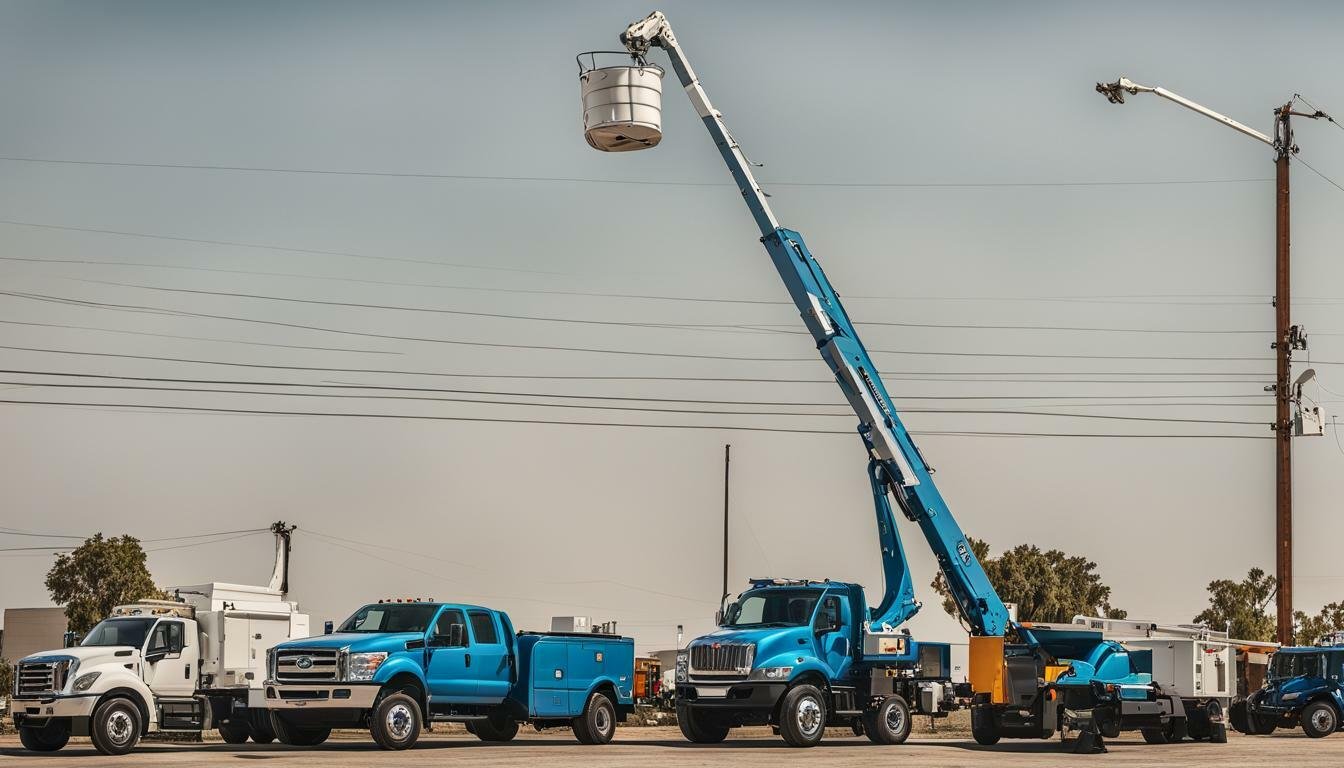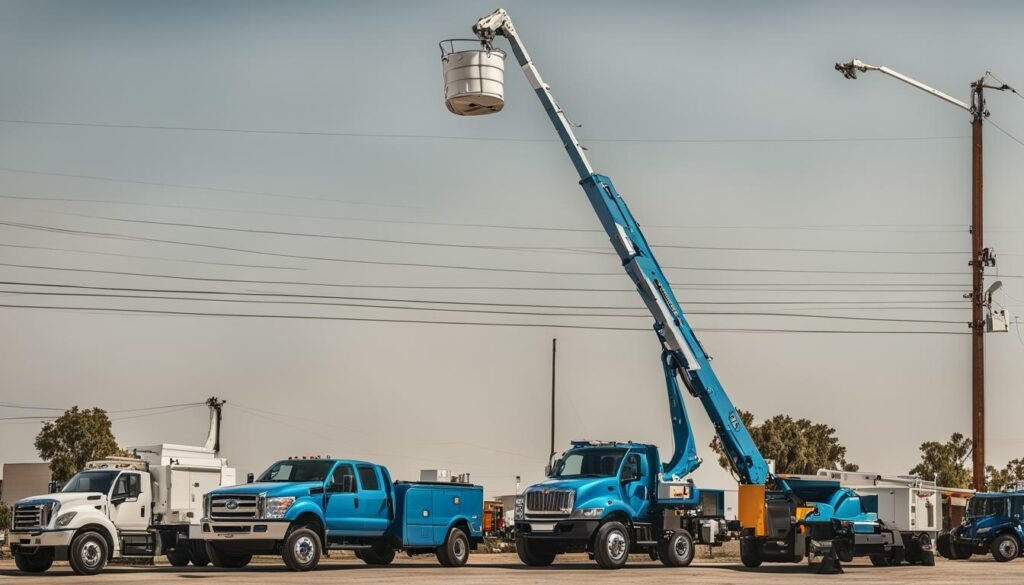 Bucket trucks are a common sight on roads and job sites, and you may have wondered why they sometimes park with their buckets extended into the air. This practice may seem strange, but it serves an important purpose that relates to safety, compliance, and equipment protection.
Bucket trucks are a common sight on roads and job sites, and you may have wondered why they sometimes park with their buckets extended into the air. This practice may seem strange, but it serves an important purpose that relates to safety, compliance, and equipment protection.
In this article, we will explore the reasons behind this peculiar parking behavior and shed light on the benefits of using bucket trucks and aerial work platforms responsibly and according to regulations. We will also emphasize the importance of bucket truck safety and discuss the compliance standards that dictate the proper use of these versatile machines.
Contents
Safety and Visibility
One of the most important reasons why bucket trucks are parked with buckets in the air is safety. When the bucket is raised, it improves the operator’s visibility, allowing them to clearly see overhead utility equipment and other potential hazards. This increased line of sight can help prevent accidents and injuries, particularly when working in crowded areas or near high traffic.
In addition to visibility, keeping the bucket raised also enhances the stability of the truck. The center of gravity of the vehicle is shifted upwards, reducing the risk of tipping or losing control on uneven or unstable terrain. By contrast, parking with the bucket lowered increases the risk of tipping or damage to the bucket or other equipment.
Parking with the bucket in the air also prevents unauthorized access to the bucket. If the bucket is left on the ground, it could be accessed by unauthorized individuals, posing a serious safety risk to others. By keeping it raised, the operator can control who has access to the bucket and ensure that it is only used by trained personnel.
Safety and Visibility Considerations
It is important to note that operating a bucket truck requires specialized knowledge and experience. While keeping the bucket raised can improve safety, it is not a substitute for proper training and adherence to safety regulations. Proper maintenance of the bucket and other equipment is also essential to ensure safe and effective operation.
Bucket trucks are valuable tools for many industries, including telecommunications, utilities, and construction. Proper use and maintenance of these vehicles is critical for both safety and efficiency.
Damage Prevention
Aside from enhancing safety, properly parking a bucket truck with the bucket raised can also prevent damage to the equipment. When the bucket is left on the ground, it is susceptible to damage from passing vehicles, harsh weather conditions, or even accidental bumps from other equipment. By keeping the bucket in the air, the chances of damage to the bucket and other components of the truck are greatly reduced.
Moreover, parking a bucket truck with the bucket in the air is also beneficial to its maintenance. Leaving the bucket on the ground can result in soil or debris entering the bucket or damaging the hydraulic system, which can be difficult and expensive to repair. Raising the bucket can prevent these issues, extending the equipment’s lifespan and minimizing potential downtime.
Compliance with Safety Regulations
In addition to safety and damage prevention, parking bucket trucks with the bucket raised is also a compliance requirement for safety regulations. The Occupational Safety and Health Administration (OSHA) and American National Standards Institute (ANSI) have set standards for aerial work platform safety, which include guidelines for bucket truck parking.
OSHA regulations stipulate that bucket trucks should be parked on a firm and level surface, with the outriggers or stabilizers deployed, and the bucket in the “store” or “travel” position. However, if it is necessary to park the truck with the boom elevated, the operator must ensure that the truck is attended and the brakes are set, and it must be equipped with an automatic over-center device to prevent any sudden downward movement of the boom.
ANSI standards call for bucket trucks to be parked on a stable incline of no more than five degrees, with the tires chocked, outriggers or stabilizers extended, and the boom positioned within the working envelope. Additionally, the bucket must be stored with the controls in the “off” position and the brakes set.
It is essential to comply with these safety regulations to ensure the secure and efficient use of bucket trucks and prevent accidents in the workplace.
Conclusion
In conclusion, parking bucket trucks with buckets in the air is a practice that serves several crucial purposes. Firstly, it enhances the safety of both the operator and the public by improving visibility, increasing stability, and preventing unauthorized access. Secondly, it helps prevent potential damage to the equipment caused by contact with the ground or other objects. Lastly, it is a compliance requirement for safety regulations and standards.
Thus, it is essential that bucket truck operators adhere to these guidelines and properly park their vehicles. However, it is also important to note that bucket trucks serve various other functions beyond parking, such as tree trimming, window cleaning, and electrical repair. Bucket trucks are versatile and useful vehicles that require proper usage, maintenance, and safety procedures.
FAQ
Q: Why do bucket trucks park with buckets in the air?
A: Bucket trucks are parked with buckets in the air for several reasons. One of the main reasons is safety. Keeping the bucket raised improves visibility for the operator, enhances the stability of the truck, and prevents unauthorized access to the bucket.
Q: How does parking with buckets in the air prevent damage?
A: Parking bucket trucks with buckets in the air helps prevent damage to the bucket and the equipment. This practice avoids potential damage caused by contact with the ground or other objects.
Q: Is parking bucket trucks with buckets in the air a compliance requirement?
A: Yes, parking bucket trucks with buckets in the air is a compliance requirement for safety regulations. There are regulations and standards that dictate this practice to ensure aerial work platform safety.
- Can you become a millionaire by investing in real estate? - November 7, 2023
- What form of AI is most commonly used in real estate? - November 5, 2023
- What is the AI real estate market forecast? - November 3, 2023
